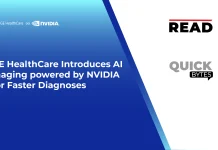Connected Spaces Platform is a foundational building block for the spatial internet, allowing developers to build an app once and then easily deploy it across mobile, web, AR, and VR.
Magnopus, an experience technology company, announced it’s open sourced its Connected Spaces Platform. The technology was recognized as one of TIME’s Best Inventions of 2022. It is a cornerstone of the next phase of the internet as it facilitates the development of interoperable spatial applications – meaning the same experience can be accessible across different devices, through different technologies, and even across physical and digital spaces. Now open sourced, the Connected Spaces Platform is free-to-use under the Apache License 2.0.
Currently, the user experience and standards for the next internet are being developed by just a handful of the world’s largest companies. But developer communities widely accept that fostering this innovation requires accessibility and interoperability. Magnopus is supporting this by open-sourcing the Connected Spaces Platform and enabling any company or creator to more easily create shared 3D experiences, connected across physical and digital and accessible across multiple platforms and devices.
“By going open source, we lay the foundations for a more diverse spatial web that communities can build on together,” said Ben Grossmann, co-founder of Magnopus. “Interoperability is at the heart of the Connected Spaces Platform. Users expect experiences to work across multiple technologies in harmony, bridging applications and devices so they can move freely beyond a series of disconnected platforms. We’ve been working on this technology for over five years, at times with more than 60 people, and have gone through rounds of testing on public experiences and private betas with developers. Now we’re excited to be releasing it to the community to encourage collaboration at scale.”
Also Read: GoNetspeed Announces Plans to Bring East Hartford 100% Fiber Internet
The Connected Spaces Platform can be accessed via Github website and Magnopus website. From there, developers can obtain and contribute to the libraries and code to build 3D applications that can communicate fluently to each other, across several popular programming languages and game engines. Once a space is created using the frameworks, it can be shared with people anywhere across devices and platforms, whether they’re on a laptop, phone, or spatial computing device. These spaces are multi-user, persistent, and can exist in physical worlds, virtual worlds, or anywhere in between.
“By releasing the Connected Spaces Platform as open source, Magnopus is providing the intrinsic services developers need to create cross-platform cross-device multiplayer connected real-time 3D experiences in the spirit of openness that will accelerate adoption, innovation, and progress for all of us. I congratulate Magnopus on this milestone; have deep gratitude for their making this huge R&D investment available as open source, and I look forward to what the community builds,” said Patrick Cozzi, CEO of Cesium and Co-Chair of the 3D Asset Interoperability Group at the Metaverse Standards Forum.
Key Features of the Connected Spaces Platform include support for:
- Cross-reality experiences
- Cross-platform interactivity and consistency
- Wide range of supported engines (Unreal, Unity, PlayCanvas) and devices
- Social interactions and presence in shared spaces (avatars, video, audio, chat)
- Spatial anchoring
- Extensible multiplayer network architecture
- Secure collaboration and tool support in real-time
- Built-in user account management features
- Single-sign-on
Using an alpha version of the platform, Magnopus worked with Expo 2020 Dubai to create a city-scale cross-reality connected space. A living digital replica of the 4km² site, connected via data streams, 3D models, video, and audio was built. It was populated with digital activations for both physical visitors on-site and remote virtual visitors, who could play and learn together in the same digital experience layer in real-time.
SOURCE: PRNewswire




